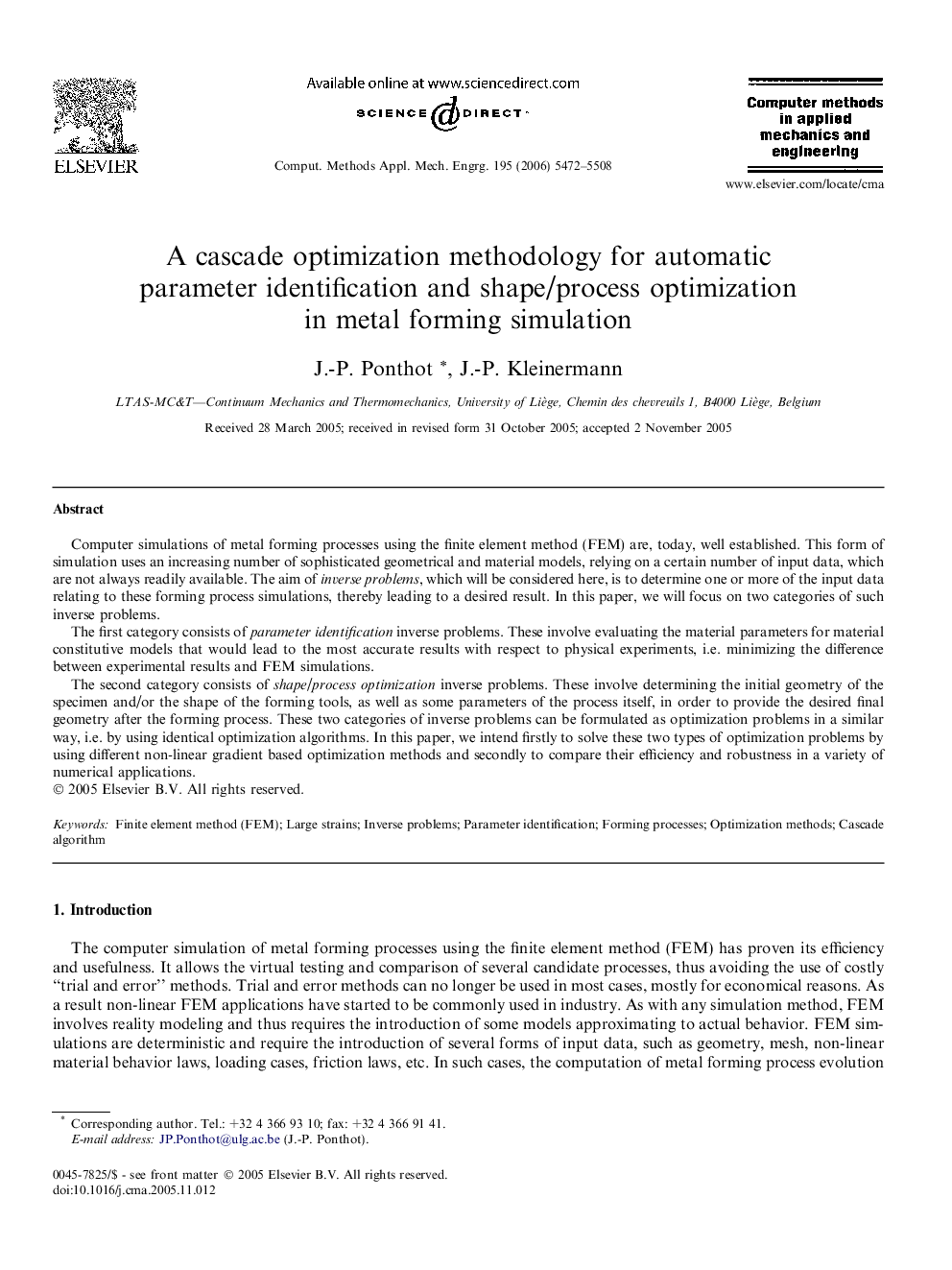| Article ID | Journal | Published Year | Pages | File Type |
|---|---|---|---|---|
| 500494 | Computer Methods in Applied Mechanics and Engineering | 2006 | 37 Pages |
Computer simulations of metal forming processes using the finite element method (FEM) are, today, well established. This form of simulation uses an increasing number of sophisticated geometrical and material models, relying on a certain number of input data, which are not always readily available. The aim of inverse problems, which will be considered here, is to determine one or more of the input data relating to these forming process simulations, thereby leading to a desired result. In this paper, we will focus on two categories of such inverse problems.The first category consists of parameter identification inverse problems. These involve evaluating the material parameters for material constitutive models that would lead to the most accurate results with respect to physical experiments, i.e. minimizing the difference between experimental results and FEM simulations.The second category consists of shape/process optimization inverse problems. These involve determining the initial geometry of the specimen and/or the shape of the forming tools, as well as some parameters of the process itself, in order to provide the desired final geometry after the forming process. These two categories of inverse problems can be formulated as optimization problems in a similar way, i.e. by using identical optimization algorithms. In this paper, we intend firstly to solve these two types of optimization problems by using different non-linear gradient based optimization methods and secondly to compare their efficiency and robustness in a variety of numerical applications.
